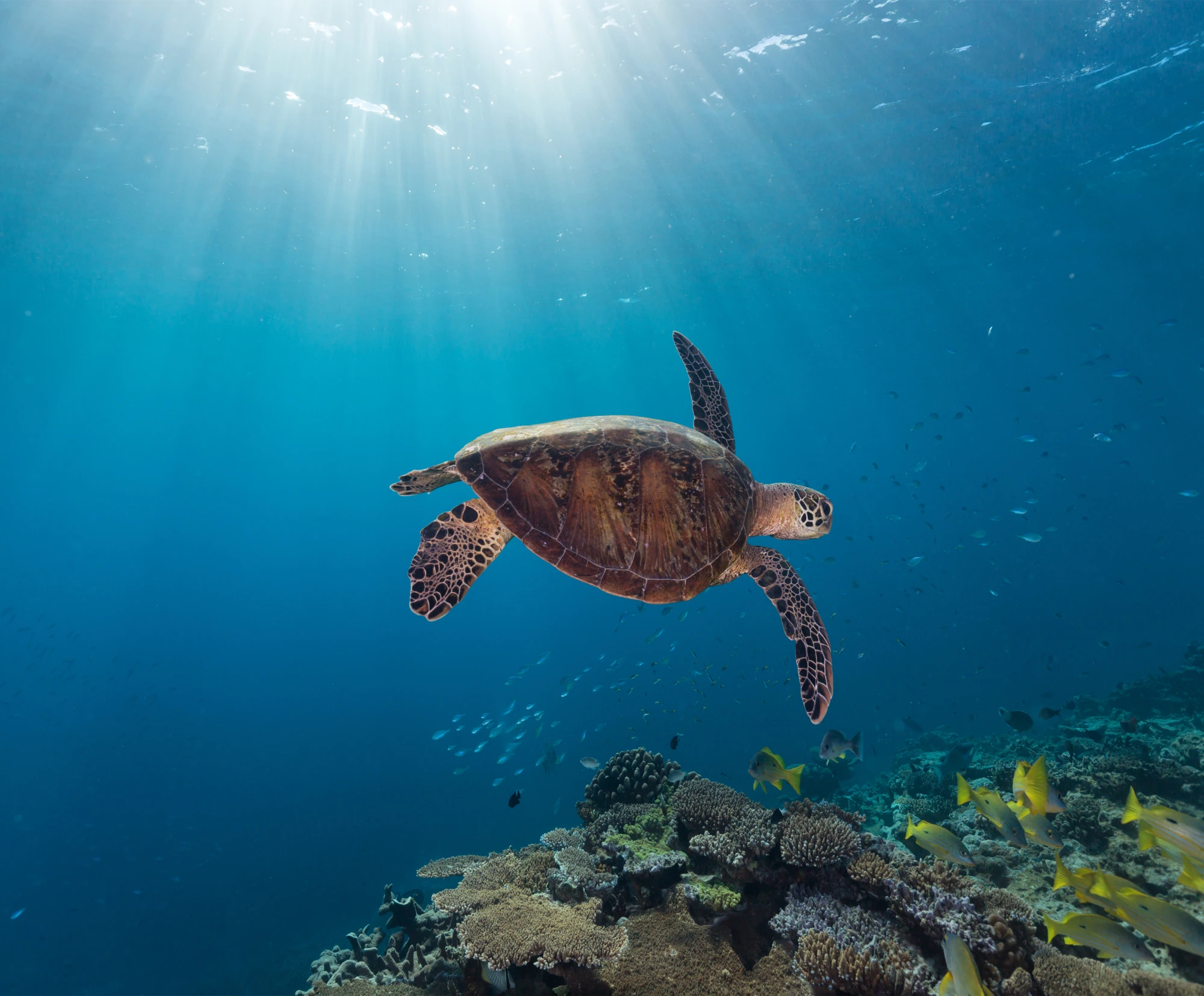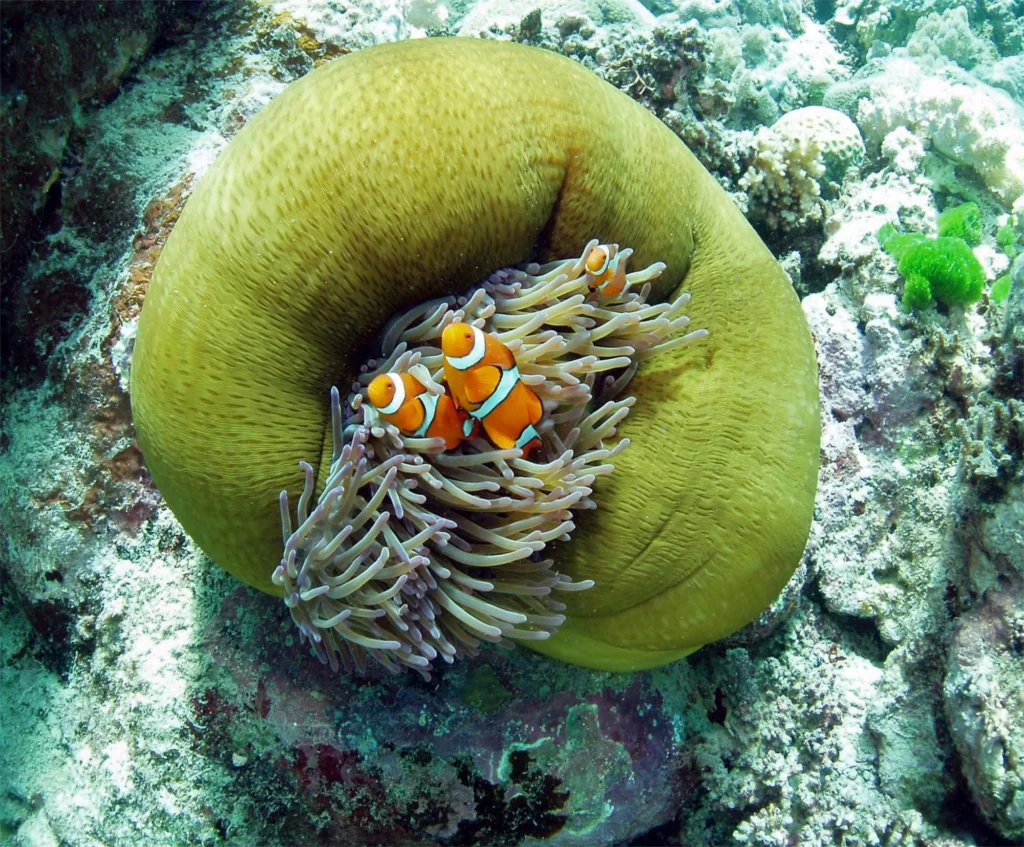
The Great Barrier Reef makes up about 10 per cent of the world’s coral reef ecosystems, and is one of the best known and most complex natural systems on Earth.
It is the Sea Country home for the first Australians — more than 70 Traditional Owner groups — whose connections to the marine environment date back more than 60,000 years.
Today the Reef is a Marine Park and World Heritage Area, supporting a range of commercial activities and attracting millions of visitors each year who come to enjoy its beauty above and below the water.
The Great Barrier Reef is an economic powerhouse, contributing more than $6.4 billion each year to the Australian economy and around 64,000 full-time jobs.
The Great Barrier Reef is unique as it extends over 14 degrees of latitude, from shallow estuarine areas to deep oceanic waters.
Within this vast expanse is a unique range of ecological communities, habitats and species – all of which make the Reef one of the most complex natural ecosystems in the world.
Some key facts about the Great Barrier Reef Marine Park:
While it’s known primarily for its giant maze of colourful reefs, its intricate architecture also provides a home for a vast number of animals and plants.
Some of these, such as turtles and crocodiles, have been around since prehistoric times and have changed little over the millennia.
The breathtaking array of marine creatures includes 600 types of soft and hard corals, more than 100 species of jellyfish, 3000 varieties of molluscs, 500 species of worms, 1625 types of fish, 133 varieties of sharks and rays, and more than 30 species of whales and dolphins.
While coral reefs initially made the Great Barrier Reef famous, they only comprise about seven per cent of the Marine Park and the World Heritage Area.
The rest of the Marine Park is an extraordinary variety of marine habitats, ranging from shallow inshore areas – such as seagrass, mangroves, sand, algal and sponge gardens, and inter-reefal communities – to deep oceanic areas more than 250 kilometres offshore.
Rather than having one level of protection throughout the Marine Park, the area is instead divided into different zones. Each zone has different rules outlining permitted activities and those that are prohibited.
Covering 344,400 square kilometres, the Great Barrier Reef Marine Park is:
The Marine Park stretches approximately 2300 kilometres along the coast of Queensland in north-eastern Australia – this is about the same length as the west coast of the USA from Vancouver to the Mexican border.
The Belize Reef off the Caribbean coast of Belize is the second longest barrier reef in the world at 290 kilometres, while Ningaloo Reef off the West Australian coast is 280 kilometres long.

The Great Barrier Reef Marine Park Authority acknowledges the expertise, wisdom, and enduring connections that have informed the guardianship of the Reef for millennia. We pay our respects to the Traditional Owners as the first managers of this land and sea Country, and value their traditional knowledge which continues to inform the current management and stewardship of the Reef for future generations. We pay our respects to the Gurambilbarra Wulgurukaba Traditional Owners on whose land the Great Barrier Reef Aquarium is situated on. We acknowledge their connection to Country and are honoured to be collaborating with the Gurambilbarra Wulgurukaba community to co-design exhibits highlighting culture values and connections to sea Country.